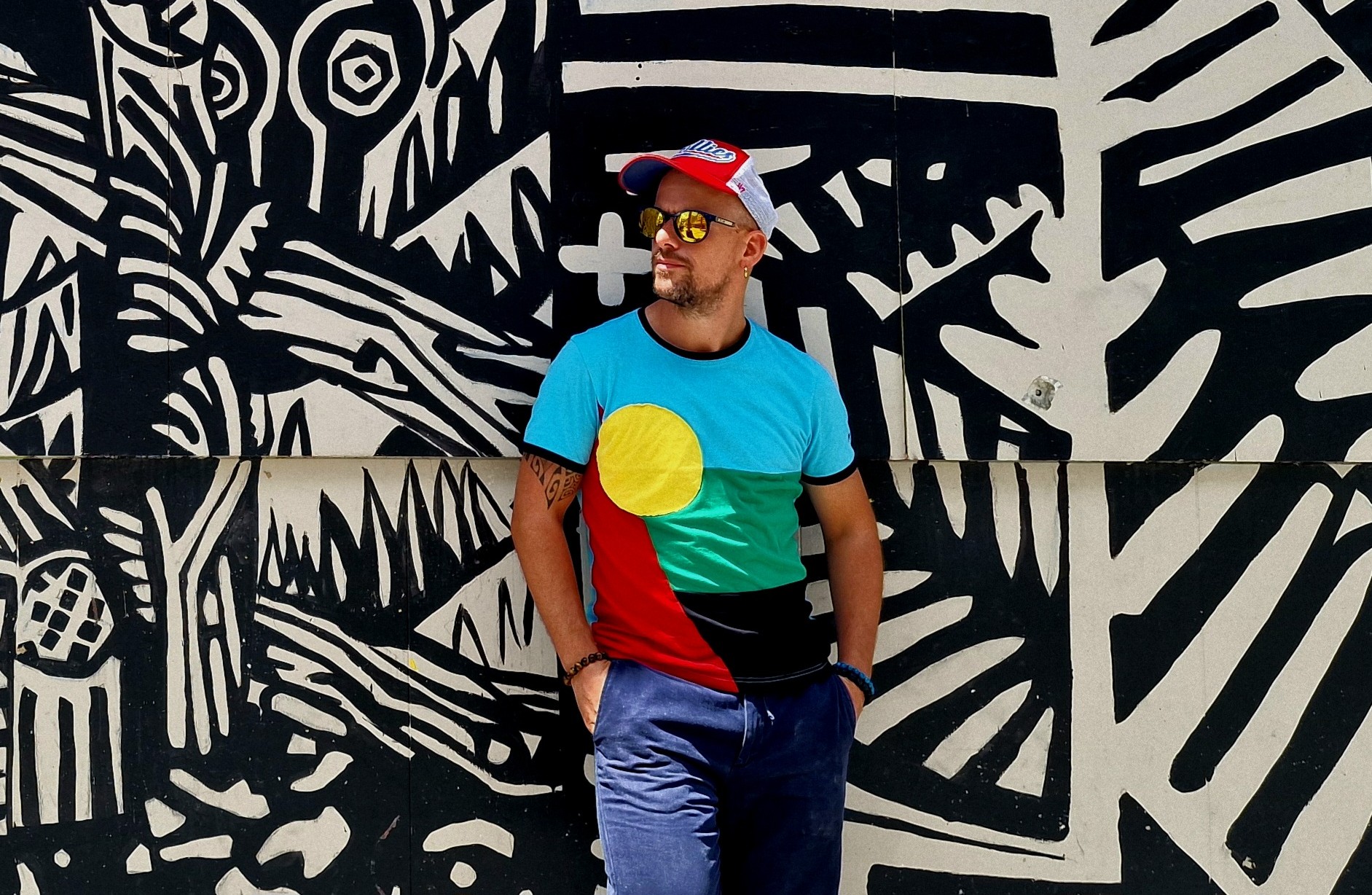A look back on Florient Jousse’s 2025 Residency

Actor, playwright and director, Florient Jousse, completed his Villa Albertine Residency in Puerto Rico in April 2025 to work on his theater project Flamboyants ! which seeks to express the cultural similarities in historic resilience through music and the spoken word.
- Could you introduce the project Flamboyants, which you developed during your residency in Puerto Rico?
Flamboyants! is a hybrid show of the kind we advocate at Collectif Tilawcis. It brings together music, theater, spoken words, video, and even documentary images. The project was born of a meeting between Big Chief Juan Pardo, from the Golden Comanche tribe of Mardi Gras Indians and Puerto Rican Bomba, Marién Torres Lopez from the group Ausuba and Ivelisse Díaz from Bombera de Corazón. I had met all these beautiful people when I toured my first creation in the United States, Frénésies tour, in March 2023.
Very quickly, I wanted to develop a story that would bring our three territories together for the first time on stage, exploring the notions of creolités through history and the resilience of peoples dominated by art. The island of Réunion is opening up more and more to the world through international collaborations, and this project is perhaps the best example of this, as we have so many common stories to pass on.
- Flamboyants is rooted in Réunion Island, Puerto Rico, and New Orleans. How did these connections take shape during your residency, and in what ways do these territories resonate or interact within the project?
When Big Chief came to La Réunion in June 2024, there was a lot of emotion. In the faces he saw on the streets, he thought he was meeting up with brothers, nieces and uncles. I gave him a taste of a traditional dish we call Chicken Carry. He was taken aback, because it tasted exactly the same as his family’s.
In Puerto Rico, the traditional music of the Bomba and ours, the Maloya, have a lot in common. We practice identical instruments. The seed we put in the maracas comes from the same plant we use for the kayanm instrument, which has the same idiophone function by shaking. The more I did research, the more what appeared to be epiphenomena elicited immense population movements and a connection beyond imagination.
One last anecdote about our Creole languages: when I speak to my Creole-speaking friends in New Orleans, with my Reunionese lexicon and turns of phrase, they respond to me with ease in Louisiana Creole. Similarly, in the Bomba’s songs of the past, certain Creole words were originally integrated. Spanish changed their pronunciation, then English. When we attempted to translate them to our Creole, a new meaning emerged that was entirely in line with what the song had originally conjured. Flamboyants! acts as an eye-opener that the audience will experience live.
- The premiere is set to take place in Réunion in fall 2025, with an American tour planned for 2026. How important is it for you to have this piece tour throughout the U.S.? What would you like to convey to American audiences?
The values that weave their way through Flamboyants! bring us back to a cohesion that spans the seas, a careful heeding to the distant rumors of a known idea of fraternity, of mutual aid, of the realization that without knowing it, we’ve been together all along.
Having traversed the American territory and visited different places which are culturally varied, despite major divisions and a troubled geopolitical context, I believe, in the light of our 20-minute presentation at the New Orleans Jazz Museum, that American audiences will find major echoes in what deeply unites them.
In Réunion, we’re just a grain of sand in the ocean. The United States is a continental country. And yet, what we have in common are our diverse populations, who have undeniably shaped a singular identity in our cultural and artistic landscape…
Flamboyants! is like the old New Orleans that the Natives called Bulbancha, the place where all languages are spoken. This is how we’re going to share this celebration, where the sounds will be new to even the most experienced ear, because we’ve never before heard a fusion between the tambourine of Mardi Gras Indians, Puerto Rican drums and Reunionese rhythms.
